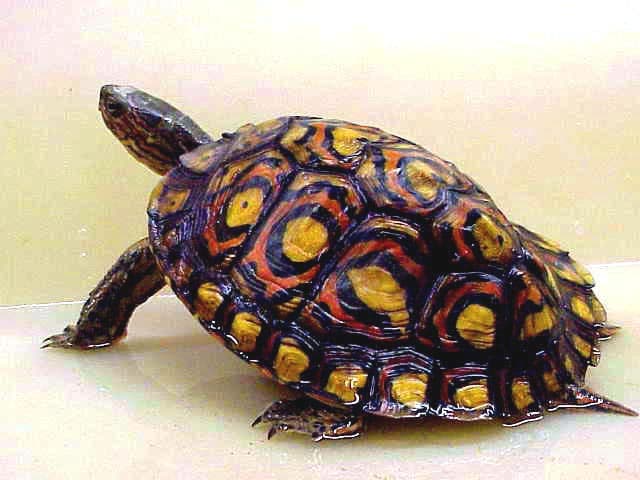Type the name of the breed you're looking for below
[wpdreams_ajaxsearchlite] Don't see the breed your're looking for? Click here and let us know!
Ornate Wood Turtle
| Place of Origin and Range | Central America |
| Description | The colour of the top shell (carapace) varies from olive to black. Darker specimens are more common where the bottom of the water body is darker. The bottom shell (plastron) is yellow, sometimes red, sometimes with dark markings in the centre. Similar to the top shell, the turtle's skin is olive to black, but with red and yellow stripes on its neck, legs, and tail. As with other pond turtles, such as the bog turtle, the painted turtle's feet are webbed to aid swimming. |
| Morph Patterns Available | Yes |
| Adult Size | Can grow up to 7.5in(18.75cm) |
| Accommodation | These turtles thrive in a fenced garden pond. A filtered aquarium with water temperature at 70-80'F(21-26'C), and a sloping ramp(driftwood, textured plastic or some other non-abrasive surface) leading from the bottom to an illuminated and warmed basking spot. Approx 80'F(27'C). |
| Lifespan | Can live 25+ years |
| Feeding / Diet | This turtle hunts along water bottoms. It quickly juts its head into and out of vegetation to stir potential victims out into the open water, where they are pursued. Large prey it holds in its mouth and tears up with its forefeet. It also consumes plants and skims the surface of the water with its mouth open to catch small particles of food. Snails, crayfish, minnows, worms, insects, and prepared foods such as pelleted trout, catfish pellets, and koi goldfish pellets are all good choices. |
| Other Considerations | Watch for theses health concerns carefully with your turtle. Vitamin A Deficiency: Vitamin A is an important nutrient for your turtle’s health. It is found in his diet in the form of leafy green, orange or yellow vegetables, liver, and fish. If your turtle is not getting enough Vitamin A, he can suffer serious health problems. Always check to make sure that your turtle does not have swollen eyelids, as this is the main sign of a Vitamin A deficiency. Also, check for weight loss, nasal discharge and infected skin. Any of these symptoms could point to a deficiency. If you think your turtle may not be getting enough Vitamin A, you should take him to the veterinarian to get a firm diagnosis. Shell Problems: Your turtle’s shell is very important to his overall health. There are many potential problems that could occur, so you should be on the lookout at all times. Respiratory Disease: Respiratory infections have symptoms similar to vitamin A deficiency, including swollen eyelids and runny nose, so you should take your turtle to the veterinarian to get a proper diagnosis if you suspect either. More serious infections will be characterized by breathing through the mouth, mucus in the mouth, and wheezing. Always make sure your turtle’s environment has the proper amount of humidity, as this will help prevent respiratory problems. |



